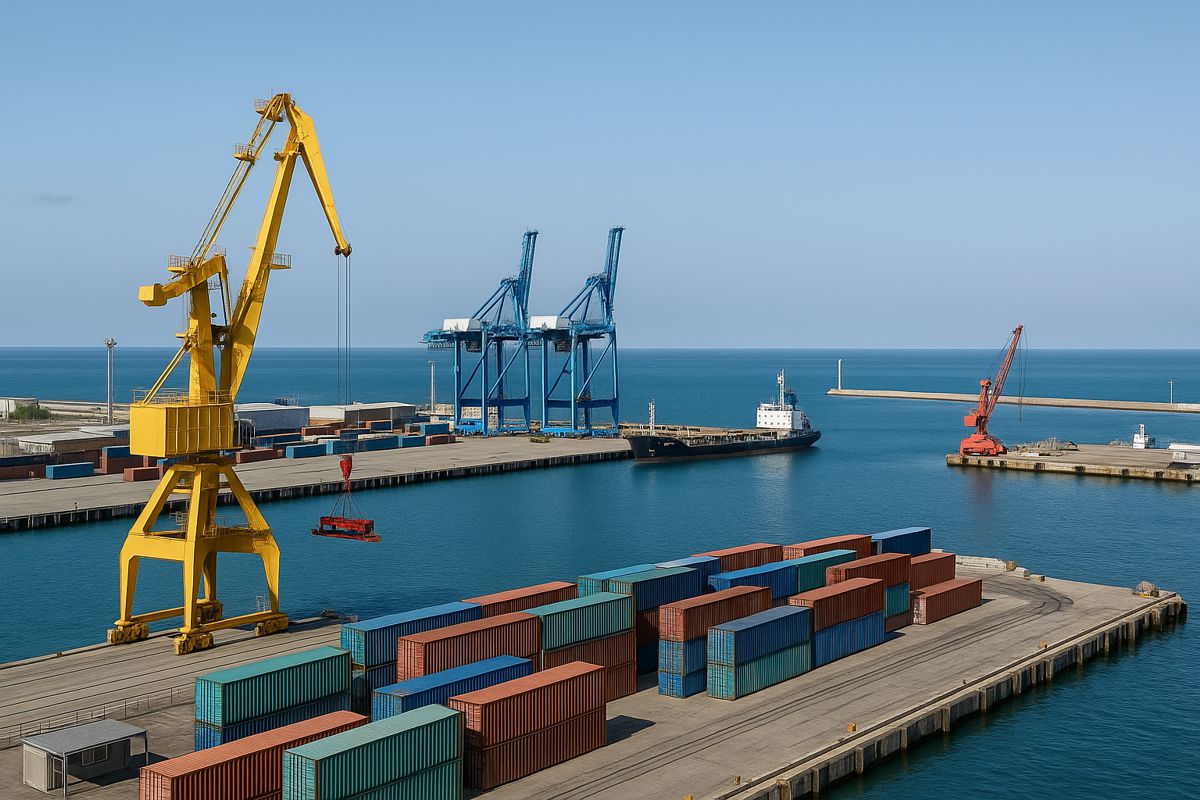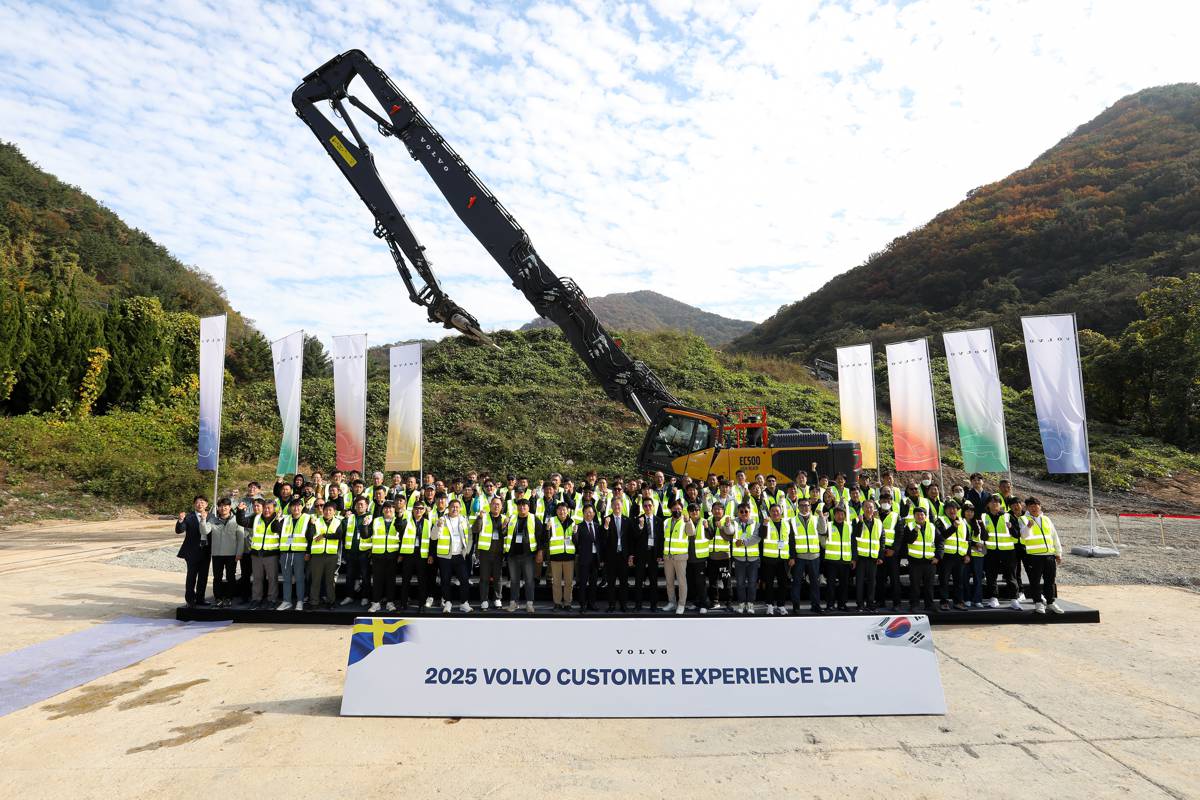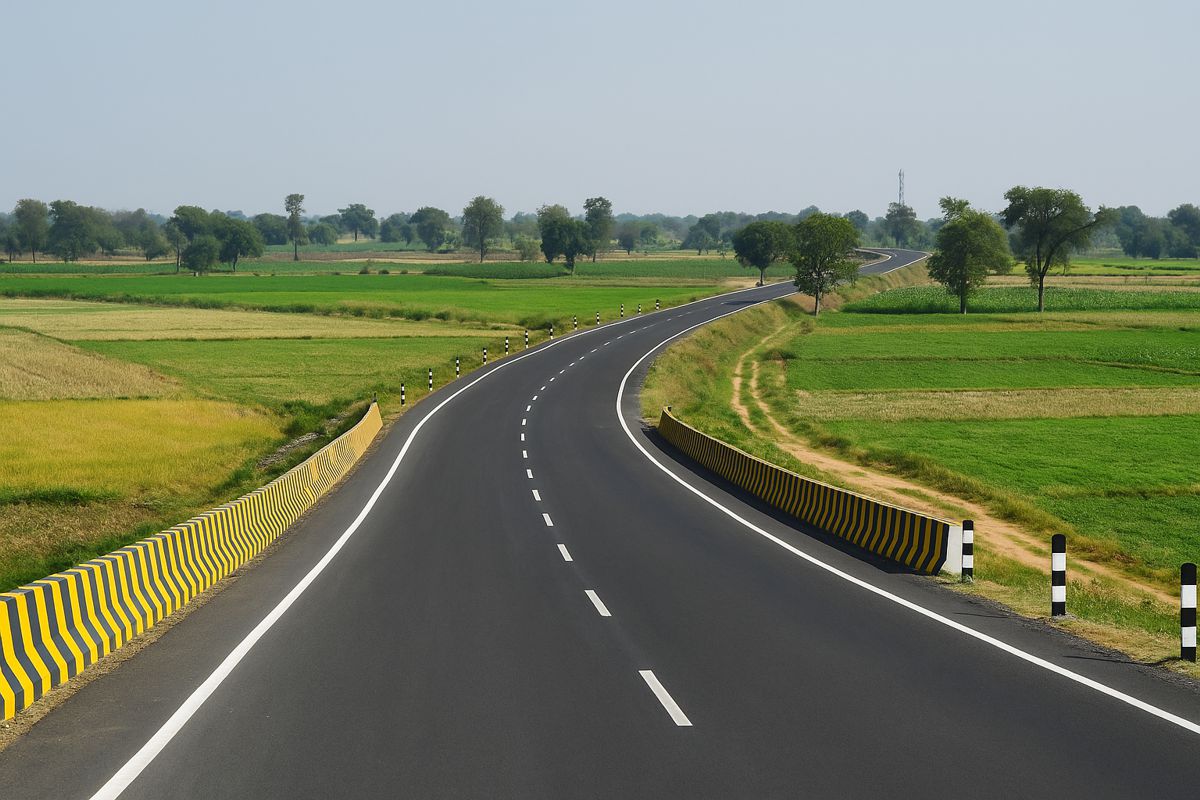EBRD and EU Boost Kazakhstan’s Caspian Port to Expand Global Trade
The European Bank for Reconstruction and Development (EBRD), in partnership with the European Union (EU), is giving a major boost to Kazakhstan’s maritime infrastructure.
A financial package worth up to €45 million is set to transform the Port of Aktau, the country’s key seaport on the Caspian Sea and a critical hub along the Transcaspian Corridor. This route is becoming increasingly vital for freight traffic between Europe and Central Asia as supply chains shift in response to geopolitical and economic pressures.
The package includes an EBRD loan of up to €35 million, supplemented by a possible €10 million investment grant from the EU’s Asia Pacific Investment Facility. These funds will help expand two berths and acquire advanced, weather-resilient ship-to-shore cranes designed to meet surging demand. Container traffic at Aktau has already jumped by 121 per cent year-on-year in 2025, underscoring the need for upgraded facilities.
A Leap in Capacity and Efficiency
Once completed, the expansion will enable Aktau to double its container handling capacity. The port will operate two fully dedicated container berths, each with separate trans-shipment lines. Efficiency gains will be striking: average container handling time is expected to fall from four minutes to just two and a half.
These improvements are not just about capacity; they also reflect the broader ambition of Kazakhstan to modernise its logistics backbone. Faster, more efficient operations make Aktau a stronger competitor to other Caspian ports, giving regional traders a reliable, high-performing maritime gateway.
A Strategic Corridor for Eurasian Trade
The Transcaspian Corridor, also known as the Middle Corridor, has been gaining traction as an alternative to traditional east-west routes. Stretching from China through Central Asia, across the Caspian Sea, into the South Caucasus and onward to Europe, it reduces dependency on northern routes via Russia. For landlocked Kazakhstan, strengthening Aktau is pivotal to remaining a central player in Eurasian logistics.
An EBRD-led and EU-funded study identified Aktau as a cornerstone in this corridor. With demand for diversified supply chains climbing, the corridor’s role in connecting European and Asian markets is only set to expand. Kazakhstan’s government, through its national welfare fund Samruk-Kazyna and Kazakhstan Railways, is already investing heavily to ensure Aktau can handle this growing demand.
Backing from International Partners
EBRD President Odile Renaud-Basso emphasised the project’s alignment with broader strategic objectives: “Together with the EU we are supporting this project because it meets our strategic objectives for Kazakhstan and Central Asia. It is also part of the global transport and logistics infrastructure solutions covered by the EU Global Gateway initiative. Our funds will help to address a key infrastructure bottleneck along the Transcaspian Corridor.”
Her comments highlight how the EU’s Global Gateway strategy, its flagship connectivity programme designed to rival China’s Belt and Road Initiative, intersects with EBRD’s mission in Central Asia. By addressing bottlenecks and financing long-term infrastructure, both organisations are enabling smoother trade flows while also driving sustainable growth.
Building the Largest Container Terminal on the Caspian
Aktau Port’s investment programme is ambitious. By the end of 2026, it aims to host the largest container terminal in the Caspian region. With the ability to process up to 240,000 twenty-foot equivalent units (TEUs) annually, this facility will transform Aktau into a logistics powerhouse.
The terminal’s strategic positioning enhances Kazakhstan’s role as a crossroads for energy exports, raw materials, and manufactured goods. It also feeds into Kazakhstan’s wider infrastructure plans, which include modernising rail links and boosting intermodal transport to streamline the entire logistics chain.
Kazakhstan’s Expanding Role in Regional Trade
The project reflects Kazakhstan’s growing importance in global supply networks. For decades, the country has been a key energy exporter, but it’s increasingly positioning itself as a logistics hub that can facilitate east-west flows. The Caspian Sea, long overshadowed by overland rail and pipeline routes, is fast becoming a competitive link in multimodal supply chains.
With geopolitical challenges reshaping trade flows, the Middle Corridor has gained renewed importance. Ports like Aktau not only improve cargo handling efficiency but also bolster regional resilience by offering diversified pathways for trade between Asia and Europe.
EBRD’s Broader Footprint in Kazakhstan
The EBRD has been one of the most active institutional investors in Kazakhstan, with more than €10 billion deployed across 340 projects. Much of this funding has been directed towards private sector development, underscoring the bank’s commitment to diversifying the country’s economy beyond natural resources.
The Aktau Port project is consistent with this mission. By unlocking logistical bottlenecks, the EBRD is enabling private companies, ranging from agribusiness exporters to manufacturing firms, to access new markets more efficiently. Improved infrastructure also makes Kazakhstan more attractive to foreign investors seeking reliable, scalable trade routes.
Driving Connectivity and Resilience
Beyond economics, the investment has strategic and social dimensions. Enhanced logistics foster regional cooperation and integration, while also supporting sustainable trade practices. Modern cranes and upgraded berths reduce inefficiencies that often lead to higher emissions, making trade more climate-friendly.
The EU’s support via the Global Gateway programme ensures that sustainability remains at the core of these upgrades. By blending infrastructure finance with environmental considerations, the project aligns with global goals of greener, more efficient transport networks.
A Maritime Hub for the Future
Aktau’s expansion signals more than just capacity growth. It represents a transformation of Kazakhstan’s role in global trade, positioning the country as a maritime hub with reach well beyond its landlocked borders. For businesses, investors, and policymakers, this is a clear indication that Central Asia is ready to take on a bigger role in the global logistics map.
The doubling of capacity, reduced handling times, and creation of the Caspian’s largest container terminal are all milestones that will reshape regional commerce. For Kazakhstan, the port stands as a gateway not only to the Caspian but to the wider world.




















